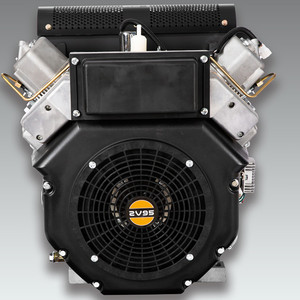(2879 products available)
































































































































































The 1000cc engine is an internal combustion engine with a displacement of 1000 cubic centimeters (cc), or 1 liter. The engine is most commonly used in motorcycles, ATVs, and small cars. Here are some common types of 1000cc engines:
Proper maintenance of a 1000cc engine is necessary to ensure its optimal performance and longevity. Regularly scheduled service must be maintained according to the manufacturer's instructions. It typically includes oil and oil filter changes, air filter replacements, spark plug replacements, and valve adjustments. These routine maintenance services keep the engine clean and well-lubricated, minimizing wear and tear on the critical engine parts.
Regular tune-ups are also vital for maintaining proper engine performance. This includes checking the ignition timing, inspecting the fuel delivery system for leaks or clogs, and ensuring that all electrical connections are secure.
Check the cooling system for leaks, proper fluid levels, and correct pressure. Overheating can cause severe damage to the engine, so be sure that the cooling system is working efficiently.
Regularly inspecting the drive belts, pulleys, and tensioners is also a fundamental part of engine maintenance, as these components transmit power from the engine to vital systems like the alternator, water pump, and air conditioner compressor. If the belts show signs of wear, they must be replaced promptly.
Regularly inspecting the drive belts, pulleys, and tensioners is also a fundamental part of engine maintenance, as these components transmit power from the engine to vital systems like the alternator, water pump, and air conditioner compressor. If the belts show signs of wear, they must be replaced promptly.
Additionally, maintaining the proper tire pressure and using the right motor oil contribute to the engine's performance and efficiency. Higher viscosity oils are not suitable for a 1000cc engine, as they increase friction.
While the engine is being used, drivers are advised to avoid heavy acceleration and deceleration, as these actions can strain the engine. If the engine is under any noticeable strain, the driver should change to an appropriate gear.
Regularly checking for engine codes or unusual noises is also crucial. If any issues are detected, they should be addressed promptly to prevent further damage.
Replacing a car engine is not a task for beginners. However, for knowledgeable car enthusiasts, here are the steps to follow when replacing a 1000cc engine.
Before replacing the engine, ensure the car is parked on a flat surface. Engage the parking brake and place chocks under the wheels to prevent the vehicle from rolling. Disconnect the negative battery cable using a wrench to prevent electrical accidents. Drain the engine oil by removing the oil drain plug and emptying the oil into a suitable container. Remove the oil filter using an oil filter wrench and discard it. Next, remove the engine's cooling system by detaching the hoses and radiator fan. Remove the alternator next by loosening the mounting bolts, adjusting the tensioner, and slipping off the belt. Disconnect the alternator's electrical connectors and set it aside. Remove the air intake system by loosening the clamps, disconnecting any hoses, and taking out the air filter housing. The fuel system should also be removed by detaching the fuel lines and fuel tank, then capping the lines to prevent spills and fumes. Disconnect the exhaust system by unbolting the exhaust manifold or headers from the engine and taking out the catalytic converter. Remove the engine mount by placing a jack under the engine to support its weight. The jack should be raised until it touches the engine. With a socket wrench, remove the bolts connecting the engine and its mounts, then pull out the mounts. Disconnect the wiring harness and other electrical connections from the engine. Remove the transmission bell housing bolts, then pull the engine away from the transmission. Lower the engine onto an engine stand using a hoist or jack. The engine is now ready to be replaced.
To install the new engine, follow the removal steps in reverse order. Ensure the engine and transmission are properly aligned before connecting them. Change the oil, coolant, and transmission fluid. Start the engine and allow it to run for a few minutes to check for leaks or unusual noises. Shut down the engine and reassemble the vehicle.
Q1: What is the difference between a 1000cc and 600cc engine?
A1: One of the key differences between 1000cc and 600cc engines is their displacement. A 1000cc engine is larger than a 600cc, making the former more powerful than the latter. As a result, the 1000cc engine produces more horsepower and torque than the 600cc. The 1000cc engines are heavier, while the 600cc engines are lighter and smaller in size.
Q2: How fast can a 1000cc engine go?
A2: The top speed of vehicles with a 1000cc engine can range from 220 km per hour to 320 km per hour, depending on various factors, including the vehicle's design and transmission system.
Q3: What kind of vehicles use 1000cc engines?
A3: 1000cc engines are used in motorcycles, ATVs, snowmobiles, and some small cars. For instance, the bmw motorbike 1000cc, kawasaki 1000cc, and 1000cc royal enfield are popular choices among riders.